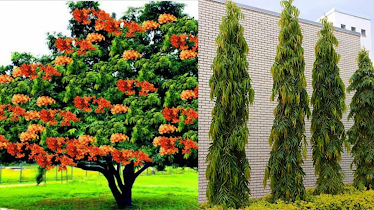Ashoka Tree Information and Benefits
The Ashoka tree, also known as the Ashoka Chakra Tree, is a tree native to India that has religious significance to Buddhists, Jains, and Hindus. It is a deciduous tree with a height of around 50 feet and a spread of around 30 feet. The leaves of the Ashoka tree are bright green during spring and summer, but turn yellow or orange in autumn before dropping off. The flowers of the Ashoka tree are small and white in color.
The ashoka tree, also known as the Ashoka pillar, is a large and sacred tree found in India. The tree has a long history of religious and cultural significance; it is believed that Buddha was born under an ashoka tree and that he attained enlightenment under the same tree. Ashoka trees are also associated with the god Shiva, who is said to have planted an ashoka sapling on top of Mount Kailash. The ashoka tree is considered sacred by Hindus, Buddhists, and Jains alike, and its symbolism can be found in many different aspects of Indian life.
The species Ashoka tree of flowering plant in the genus Saraca, native to the Indian subcontinent and adjacent regions of Southeast Asia. The trees are known for their beautiful and fragrant flowers and for their extremely hard wood, which has been used for centuries in India as an important building material
Ashoka tree Scientific name
Ashoka tree is also known as the “Ashoka Chakra Tree” because Buddha meditated under this tree for a period of time. The tree is also associated with the dharmachakra, the wheel of Dharma, which is a symbol of Buddhism. The Ashoka tree is known for having a long lifespan. It has been known to live for over two hundred years. At the age of 200 years, an Ashoka tree can weigh as much as 320 pounds. The tree can live for over 301 years. The oldest Ashoka tree in the Bodh Gaya area in India is said to be at least 200 years old. The Ashoka tree is also known as the “Gandharva tree” because of the Gandharva bird that is associated with this tree. The Ashoka tree is also known as the “Gandharva tree” because the Gandharva bird that is associated with this tree. The Ashoka tree is also known as the “Gandharva tree” because of the Gandharva bird that is associated with.
Sita Ashok tree
The name of this tree is read as Sita Ashoka, when Sita Mata was kept in Ashoka Vatika, Sita Mata used to live under the Ashoka tree, due to which this tree came to be known as Sita Ashoka, the flowers of Ashoka tree are very beautiful and fragrant. There are.
Although the flowers of Ashoka tree bloom only once in a year in the spring.
Most of the people who plant Ashoka tree in their homes (Saraca India)
The one that grows straight and whose leaves are long sloping is not considered a suitable tree for the use of herbs.
Jonesia Ashoka is considered to be the real Ashoka tree.
It is also called Madhu Pushpa or Ashok Manjari. The Ashoka tree is believed to be the remover of mourning.
Ashoka tree is considered very important in many ways, due to which it is a tradition to plant it in homes.
From the point of view of Ayurveda, Ashoka tree is considered to be very soft and connecting bones.
Take 10 grams of dried bark of Ashoka tree and boil it in one liter of water and when 100 grams of water is left, filter it and take it in the morning and evening, the broken bone joins soon.
it shrinks the blood
Ashoka tree is beneficial in the shrinkage of blood, due to this it is also used to prevent blood defects and bleeding.





.webp)


0 टिप्पणियाँ